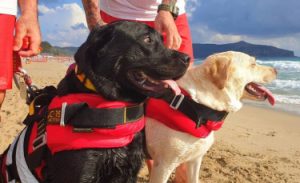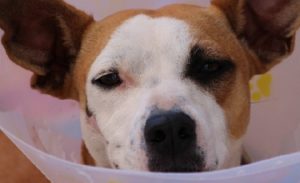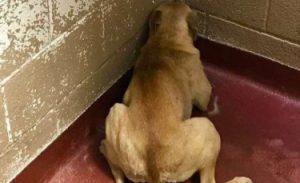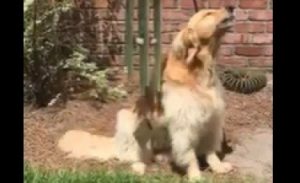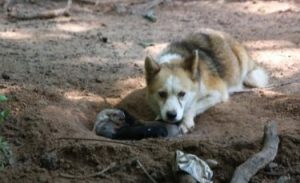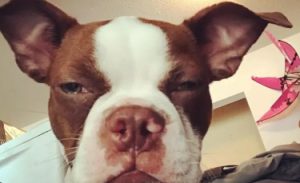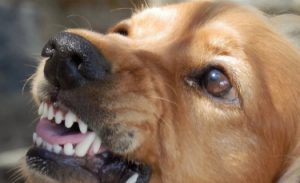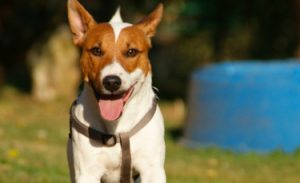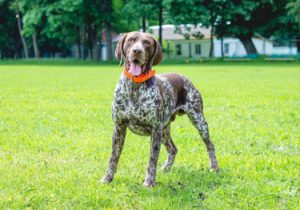Other names: Gray Elkhound, Norwegian Elkhound, Norsk Elghund Gra
The Gray Norwegian Elkhound is a sturdy dog, of rather compact build and exhibiting the typical appearance of a Spitz-type dog. Characterized by well-erect ears, the Gray Norwegian Elk Dog has a particularly thick and thick coat, but the coat is not long or bristly.
<!–
–>
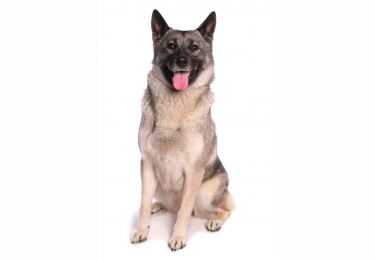
| Half-long | |
| Norway | |
| Average | |
| Triangular |
| Sex | Weight | Cut |
|---|---|---|
| Female | From 18 kg to 25 kg | From 46 cm to 51 cm |
| Male | From 23 kg to 27 kg | From 48 cm to 53 cm |
History of the breed
The race of Gray Norwegian Elk Dog is very old. It has been used for a very long time by the Scandinavians for hunting big game : elk of course, but also bears and wolves. It was in 1877 that this dog was exhibited for the first time , by the association of Norwegian hunters. The Association of Elk Dogs was founded in 1923. In the process, the breed was officially recognized by the British Kennel Club. The following decade saw the creation of the Norwegian Elkhound Association of America in the United States.
Physical features
His hair: medium length, rough texture, good thickness and never curly. Shorter and smoother at the head and front of the limbs. Longer on the neck, thighs and posterior sides of the limbs, as well as the tail. The outer coat is associated with a soft undercoat, the whole giving the dog good protection against cold and bad weather.
Its color: gray in different shades, with black ends on the top coat (darkened). On the chest, belly, limbs, inner side of the tail and under its base it is lighter. Presence of brand in harness (5 cm wide band) going from the withers to the elbow. Darker on the ears and the front part of the muzzle (mask). The undercoat is light gray in color.
Its head: dry, wedge-shaped, rather broad at the level of the ears. The length of the skull, which is slightly domed, is approximately equal to that of the muzzle. The stop is marked, but without being abrupt. The nose is black, the muzzle gradually becoming thinner, the muzzle straight, the lips tight and the jaws articulated like scissors.
His ears: well erect, set high, ending in points, remarkably mobile, rather small in size compared to the whole.
His eyes: dark brown in color, not prominent.
His body: writable in a square and strong. The neck is moderately long, firm, characterized by an abundant ruff. The topline is straight over the entire length, the withers are well extended, the back strong and straight, the loins short and well developed, the croup powerful and rather broad, the chest ample and well let down, the ribs well sprung, the bottom line and belly almost straight.
Its tail: thick, rather short, covered with a thick hair, set high, rolled up on the line of the back, never on the side.
Behavior and character
| Affectionate | |
|---|---|
| Calm | |
| Protective | |
| Independent | |
| Hunter | |
| Barks / howls |
Behavior with others
| Cohabitation with children | |
|---|---|
| Sociable with other animals | |
| Love strangers |
The Norwegian Gray Elkhound being originally developed for moose hunting (as its name suggests), it has the qualities that allow it to work on game of such size: courage and determination . The Gray Norwegian Elk Dog is also distinguished by the great energy that animates it .
The Gray Norwegian Elk Dog
is it right for you? Take the test!
Education
| Clever | |
|---|---|
| Obedient |
Docility is not the first characteristic of this kind of dog, it is advisable to show firmness during his education , while being fair and balanced in the handling. Brutality should never be the order of the day. It is to be educated and socialized early enough .
Living conditions
| Suitable for apartment living | |
|---|---|
| Good for new masters | |
| Love it hot | |
| Love the cold |
the Gray Norwegian Elk Dog is not meant to live in an apartment . He needs a lot of space to express himself. A house with a large fenced garden would suit him perfectly. It is aimed more at experienced teachers, capable of giving it a firm, but fair education.
Health
| Solid | |
|---|---|
| Ease of gaining weight |
the Gray Norwegian Elk Dog is a dog of solid constitution and whose double coat offers a good protection against the difficult climatic conditions. However, the breed has a predisposition to certain diseases, mainly dermatological and ocular: pyoderma, sebaceous cysts, keratitis, retinal atrophy, cataracts, aberrant eyelashes, glaucoma …
Hypoallergenic breed
No
Litter size
Between 5 and 10 puppies
| Major concerns |
|
||||||
| Minor concerns |
|
| Occasional concerns |
|
|||
| Suggested tests |
|
To protect you from these risks and insure your companion in the event of health problems, Woopets advises you to take out insurance for Gray Norwegian Elk Dog dog .

function showAssuranceForm () {var siteReferer = var id_race_association = ”; //console.log(id_race_association);success: function (html) {}});}document.addEventListener (‘DOMContentLoaded’, () => {$ (‘# assuranceModalBanner’). on (‘show.bs.modal’, function (event) {showAssuranceForm ();});});
Life expectancy
Minimum: 12 years old
Maximum: 14 years
The life expectancy of a Gray Norwegian Elk Dog is, on average, between 12 years and 14 years.
Calculate the human age of your Gray Norwegian Elk Dog!
To choose… 1 year 2 years 3 years Four years 5 years 6 years 7 years 8 years 9 years 10 years 11 years old 12 years 13 years 14 years old 15 years old 16 years old 17 years 18 years old 19 years old 20 years 21 years old
Maintenance and hygiene
| Ease of maintenance | |
|---|---|
| Cost of maintenance | |
| Hair loss |
| Drool level | |
|---|---|
| Ease of grooming |
the Gray Norwegian Elk Dog is a dog requiring regular maintenance , but not binding.
It is recommended to brush the dog 2 times a week apart from the moult. When this occurs (twice a year), brushing becomes daily. It is only to be washed if it has become very dirty.
Its hair, ears, eyes and pads should be examined after each outing in the wild to detect and remove any debris or external parasites. His teeth need to be brushed frequently to remove tartar build-up and the proliferation of bacteria. Finally, if they do not wear out naturally, its claws need to be cut. If you are new to this, it is recommended that you seek advice from a veterinarian or groomer.
Price and budget
Purchase price
Mini
700 € Maxi
1200 €
The purchase price of a Gray Norwegian Elk Dog is between € 700 and € 1,200.
Annual maintenance cost
Mini
€ 600 Maxi
800 €
The annual maintenance cost for a Gray Norwegian Elkhound is between € 600 and € 800.
No name is currently proposed. Use our tool to find the name of your Gray Norwegian Elk Dog!
Food
The Gray Norwegian Elk Dog needs a quality diet , adapted to its level of physical activity, size and age. Its food, which can be composed of raw meat, vegetables and starches, is to be divided into 2 meals per day . To avoid any risk of bloating, it is advisable to ensure that the dog eats in peace and that he does not practice any intense physical activity at least one hour before and after his meal.
Want the best for your dog?
Create the tailor-made diet for your Gray Norwegian Elk Dog
I discover !
PROMO -30% | Delivered to you!

Physical activity
| Athletic | |
|---|---|
| Energy level | |
| Potential to play |
the Gray Norwegian Elk Dog needs a lot of daily exercise to get active. It takes a long walk a day, or even 2 .
Competitions
| Classifications & Standards |
|
Others
| Master character <span class="btnTooltip qTip2" title="- Calm: the master must be gentle and know how to show patience. – Active: the owner must be energetic and dynamic to live in harmony with his dog. – Hyperactive: the owner must be stimulating and very restless to suit the temperament of his dog.”> |
Active |
|---|
We talk on the forum
Norwegian maine coon crossbreed kitten
Guest message
Pastelle, European Gray
Ninastone message
Beautiful gray long haired cat to adopt
Message from Croco
AVATAR beautiful gray & white cat to ADOPT
Guest message
bam the dog now bam the dog’s revenge
Message from angeacorne
Do you have a question about the Gray Norwegian Elk Dog?
Do not hesitate to ask Woopets visitors for advice on the forum!
FCI Information
FCI No.
242
FCI Group
Group 5: Spitz-type and primitive-type dogs
Recognized by FCI
Since 1963
</div


